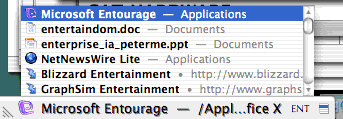By and large, I don’t take truck with religion. Born and raised an avowed atheist, I had trouble understanding how it could be valuable — my knee-jerk reaction was that it does little more than narcotize.
Maturation is a wonderful thing — understanding the colors, shading, textures of what’s out there. Part of that maturation was to try to impose less of my notions on other things — to let them be. In the course of this, I became more aware of the Quakers (also known as the Society of Friends) and their approach.
The Quakers are Christians, but don’t hold that against them. From what I can tell, most Quakers can’t stand Christians, either. Quakers have no clergy. Quakers think that, yes, Jesus was a child of God, but hey, we are all children of God. He had some great ideas, but wasn’t particularly special. Quakers are pacifists. In American history, Quakers are often the first to do that which later on becomes understood as “right” — they were the first fiercest abolitionists.
A key element of Quaker practice is the weekly Quaker meeting. Apart from occurring on Sunday, it’s similarity to other Christian practice ends there. In Quaker meeting, the group sits, silent. Again, no clergy, so no sermon. The only time a Quaker speaks is when the spirit moves her. A Quaker is asked to speak only if it will improve upon the silence. This is a substantial threshold. Entire meetings may go by without a sound. A kind of group meditation. Encouraging real reflection.
In the chattering world that is media, internet, urbanism, that notion of silence becomes even more powerful, meaningful, useful. It’s made me wish that everyone took to heart that request — speak only when it will improve upon the silence.
(This is not to suggest that I follow such an axiom. I’m one of the worst silence-fillers I know.)
When I stopped writing on my website a couple of months ago, I was surprised at how… concerned some people were. “Why did you stop writing?” I realized that, at the time, I really hadn’t anything to say. I was posting out of obligation to an audience, not because the spirit moved me.
I was also growing increasingly frustrated with the echo chamber effect of weblogs. A meme drifts out there, and then 38 different people post their take on that meme, and they all link to each other, and, as a reader, you bounce from post to post, the semantic feedback growing until it’s deafening. I needed to remove myself from that for a while. To prune a tree. To look on as my g/f and another friend weeded my garden. To get licked in the face by a dog. To prepare my taxes. To watch work out while watching TeeVee.
I’m back. I probably won’t post as much as I once did. (Though today is an exception! Suffice to say that when you stop writing, the ideas well up.) I’ll try to make sure that, when I do, I improve upon the silence. And if you return to this site, and there’s nothing new, I ask you to reflect upon that, appreciate that silence, before you continue through your bookmarks.
